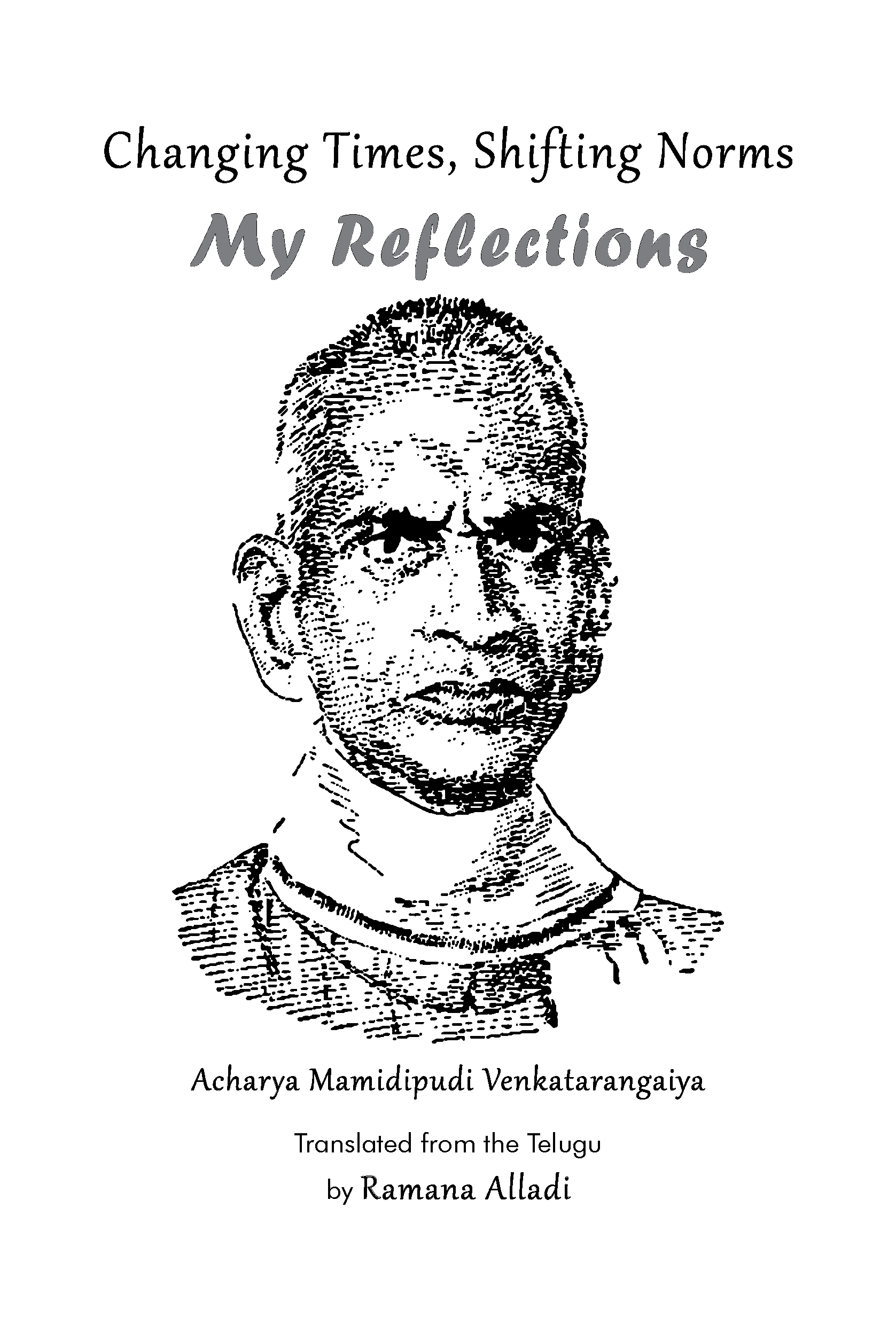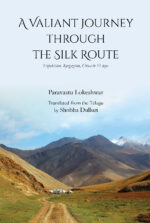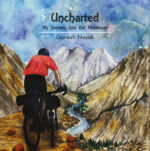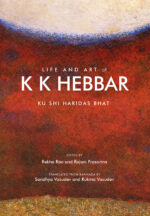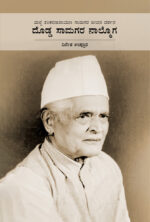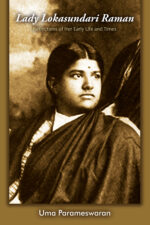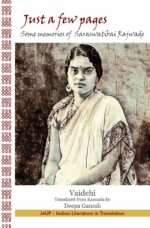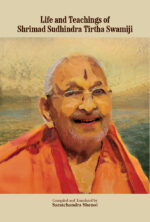Changing Times, Shifting Norms: My Reflections
₹680.00
Author: Acharya Mamidipudi Venkatarangaiah Translator: Venkata Ramana Alladi
Acharya Mamidipudi Venkatarangaiya’s autobiography Marutunna Samaajam – Na Gnapakaalu, written in Telugu, is a significant document reflecting on eventful nine decades in India’s history. Venkatarangaiya bears witness to a society in transition and offers astute commentary on the state of India’s politics and history. He was a towering luminary of his generation and was awarded the Padma Bhushan in 1968. His contribution to society, especially in the field of education was exemplary. A new translation of this work into English by his grandson Venkata Ramana Alladi will be important for the present generation to learn how the early and mid 20th century society transformed at the confluence of tradition and modernity.
Interested customers may write to us at mup@manipal.edu about purchasing the book.
| Also available on |
| Category: | Biographies/ Memoirs/ Festschrift |
|---|
| Author | |
|---|---|
| Format |
Related products
-
A Valiant Journey Through the Silk Route
₹575.00Author: Paravastu Lokeshwar, Translator: Shobha Dulluri
A Valiant Journey through the Silk Route is a travelogue that covers the incredible travel across the ancient Silk Route with the most alluring halts in Uzbekistan, Kyrgyzstan, and China to achieve a lifetime dream of a vagabond. The journey that starts in New Delhi and ends in Beijing opens up new vistas that are fascinating. The route covers historical monuments, museums, ancient oases, cemeteries, rural settings, public marketplaces, and several other landmarks and attractions. The travel continues through the deserts, passes by the rivers, treks up on the mountainous terrains – the path through which the great ancient travellers trudged.
Interested customers may write to us at mup@manipal.edu about purchasing the book.
Also available on

-
Uncharted: My Journey into the Himalayas
₹700.00Author: Ganesh Nayak
Ganesh Nayak found his calling in something totally out of the box. He developed an interest in cycling and quit his earlier job to cycle around India. His attempt to focus on health and fitness ultimately transformed into solo expeditions, as he wheeled his bicycle into Srinagar, and further went on to cover Ladakh, Himachal Pradesh, Uttarakhand, Nepal, Bihar, Uttar Pradesh, Madhya Pradesh, Maharashtra, Goa, Karnataka, the gruelling mountain circuits in the Himalayas, the Ring Road in Iceland, the Pamir Highway in Tajikistan and Kyrgyzstan. During the travels he was chased by monkeys, saw snow leopards and met similar spontaneous travellers. He currently serves as an Assistant Professor at the Department of Instrumentation and Control Engineering, Manipal Institute of Technology (MIT), Manipal. Apart from a Master?s degree in Digital Electronics he has also earned a diploma in Outdoor Education from National Outdoor Leadership School, USA. His research interest is in the field of Outdoor Education. When he is not preparing for his next bicycle tour, he is facilitating outdoor experiences to inculcate leadership and environmental stewardship amongst his students at MIT, Manipal.
Interested readers may write to us at mup@manipal.edu about purchasing the book.
-
Life and Art of K K Hebbar
₹2,000.00Author: Haridas Bhat Editors: Rekha Rao, Rajani Prasanna Translators: Sandhya Vasudev, Rukma Vasudev
K K Hebbar was a trailblazer in Indian art. His contributions to modern Indian art as an artist, teacher, and art administrator are unparalleled. What is ‘Indian’ in modern Indian art has been a subject of discussion since the beginning of the modernist movement. Hebbar’s oeuvre is an answer to that question. It is modern and yet, intensely Indian, both in terms of subjects and treatment. Hebbar remained rooted in his native soil. His line drawings are a treasure of Indian art. No one has surpassed them in their delicacy and lyricism.
This biography is Mr Bhat’s affectionate account of his friend Hebbar’s life and art. The strength of Hebbar’s character comes through in his narration. Integrity and self-discipline were Hebbar’s defining qualities. Arguably, the man was greater than his work. And that makes his story intriguing. This biography of a major artist is a welcome addition to the meagre literature on Indian artists.
Interested customers may write to us at mup@manipal.edu about purchasing the book.
Also available on

-
Dodda Samagara Nalmoga
₹350.00Author: Dinesh Uppoora
ದೊಡ್ಡ ಸಾಮಗರೆಂದೇ ಪ್ರಸಿದ್ಧರಾದ ಮಲ್ಪೆ ಶಂಕರನಾರಾಯಣ ಸಾಮಗರು ಬಹುಮುಖ ವ್ಯಕ್ತಿತ್ವವುಳ್ಳ ಒಬ್ಬ ಮಹಾನ್ ದಾರ್ಶನಿಕ. ಸ್ವಾತಂತ್ರ್ಯ ಹೋರಾಟಗಾರರಾಗಿ ಬ್ರಿಟಿಷರ ಆಡಳಿತದ ಧೋರಣೆಗಳ ವಿರುದ್ಧ ಹೋರಾಡಿ ಜೈಲುವಾಸ ಅನುಭವಿಸಿದವರು, ಹರಿಕಥಾದಾಸರಾಗಿ ತನ್ನ ವಿಚಾರಧಾರೆಯನ್ನು ಸಮಾಜಕ್ಕೆ ಪ್ರಚುರಪಡಿಸಿದವರು, ತನ್ನ ಪ್ರತ್ಯುತ್ಪನ್ನಮತಿತ್ವದಿಂದ, ಅಗಾಧವಾದ ಪಾಂಡಿತ್ಯದಿಂದ ತಾಳಮದ್ದಳೆ ಅರ್ಥಧಾರಿಗಳಾಗಿ ಕಲಾರಸಿಕರ ಮನಗೆದ್ದವರು. ಉತ್ತಮ ವೇಷಧಾರಿಗಳಾಗಿ ಬೇಡಿಕೆಯ ಕಲಾವಿದರಾದವರು, ಸರಳ ಜೀವನದ ಆದರ್ಶ ವ್ಯಕ್ತಿತ್ವದಿಂದ ಗಾಂಧಿವಾದಿಗಳಾಗಿ ಬದುಕಿದವರು. ಇವರು 1911 ರ ಡಿಸೆಂಬರ್ 11 ರಂದು ಜನಿಸಿ, 1999 ರ ಆಗಸ್ಟ್ 1 ರಂದು ನಿಧನರಾದರು.
ಅವರ ಜೀವನದ ಘಟನೆಗಳನ್ನು ಆಧರಿಸಿ ಬರೆದ “ದೊಡ್ಡ ಸಾಮಗರ ನಾಲ್ಮೊಗ”ವನ್ನು ದಿನೇಶ ಉಪ್ಪೂರರು ಹಲವಾರು ಗ್ರಂಥ, ಸ್ನೇಹಿತರು, ಅಂತರ್ಜಾಲ ಇತ್ಯಾದಿಗಳಿಂದ ಸಂಗ್ರಹಿಸಿ ಅನಾವರಣಗೊಳಿಸಿದ್ದಾರೆ.
Interested readers may write to us at mup@manipal.edu about purchasing the book.
-
Lady Lokasundari Raman: Reflections of Her Early Life and Times
₹380.00Lady Lokasundari Raman was a charismatic person in her own right, as well as a devoted helpmate to her scientist-husband, Sir C V Raman. The book traces her early life in Madurai, Chennai and Calcutta, and we get a glimpse of the role of a young woman in the early decades of the twentieth century as she went forward bearing the many responsibilities of an extended family. This biography brings to light details of an unconventional wedding that had to be postponed due to societal pressures and an unconventional marriage between two great individuals.
Interested customers may write to us at mup@manipal.edu about purchasing the book.
Also available on

-
Just a few pages: Some Memories of Saraswatibai Rajwade
₹210.00Author: Vaidehi, Translator: Deepa Ganesh
This book is a coming together of two women writers of modern Kannada literature; one from its early period, the other, a contemporary. Saraswati Bai Rajwade, the early writer, became a fable, a mythology, leaving behind only the shadows of her writing. Vaidehi, the contemporary writer, reinvents Rajwade from the folds of history and gives her a life in the present. Saraswati Bai Rajwade was born into a poor family in the Dakshina Kannada of yore. By chance, she stepped into theatre and later into films. But all the glory that came to her unexpectedly, vanished just as suddenly. She later became the wife of a rich and high official, travelled abroad and underwent immense suffering. In her pain and loneliness, she took to books and also began to write and attained glory as a writer. In the last years of her life, she returned to a life of austerity and anonymity. Vaidehi has collected bits and pieces from her life and writing, presenting before us a unique tapestry. In this tapestry, Vaidehi?s perceptions criss-cross with Rajwade?s life and writing. Art does not reside in the object, but in its close encounter with life. This work unfolds before us as a grand illustration of such twin narratives.
Interested readers may write to us at mup@manipal.edu about purchasing the book.
-
Life and Teachings of Shrimad Sudhindra Tirtha Swamiji
₹180.00Translator: Saratchandra Shenoi
Shrimad Sudhindra Tirtha Swamiji was the 20th Mathadhipati of Shree Kashi Math Samsthan and the beloved Dharma Guru of the Gowda Saraswat Brahmin community. The Shree Kashi Math Samsthan has a long and glorious history, with numerous branches and institutions across India.
This volume provides an overview of Swamiji’s life and teachings. It features a pen portrait of Swamiji, along with notes on select milestone events that marked his spiritual journey. Additional insights into related topics enrich the narrative, while a lyrical tribute adds a heartfelt dimension to the book.
At its core, the book presents a compilation of Swamiji’s teachings, drawn from his many discourses. These teachings are a source of spiritual knowledge and practical wisdom that offer timeless guidance and inspiration to readers.
Interested readers may write to us at mup@manipal.edu about purchasing the book.
Also available on

-
Footprints on the Sands of Time
₹350.00Author: Umesh Bhat B
Step into the captivating world of Dr Mahadev as he embarks on a journey of self-discovery. Tracing his lost memory, family, and roots Dr Mahadev moves through the bustling streets of medieval North India in the 12th Century to the serene shores of present-day coastal Karnataka. As Dr Mahadev searches for answers to his past, he meets the struggles of people through the ages, from the turmoil of invading forces to the peaceful present. Along the way, he explores the fascinating world of genetics, from its beginnings with Mendel to the latest breakthroughs in medical science, including the search for the gene responsible for a rare genetic disease called “myelofibrosis.”
With elements of mystery, romance, and vivid descriptions of travel, this story captures the essence of human experience. Dr Mahadev’s journey is not just about finding himself, it is about understanding the connections between generations and appreciating the nuances of life. The story unfolds in the coastal regions of Karnataka, Kerala, and Tamil Nadu. It is filled with vivid depiction of the historical and traditional richness of these lands. Through Dr Mahadev, the readers will be transported on an unforgettable adventure filled with history, geography, and the resilience of human spirit.
Interested customers may write to us at mup@manipal.edu about purchasing the book.

